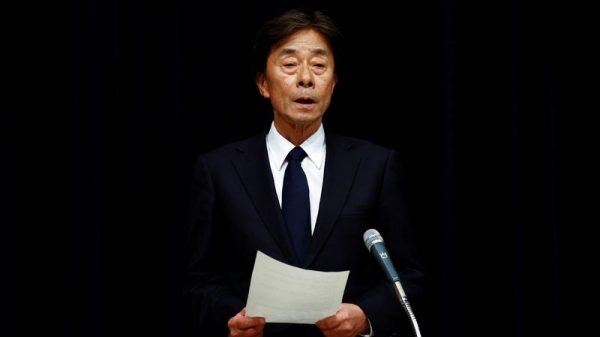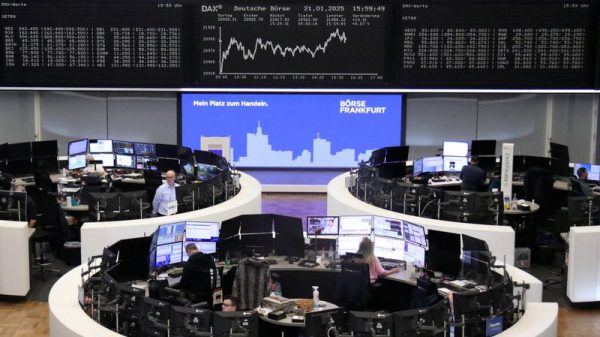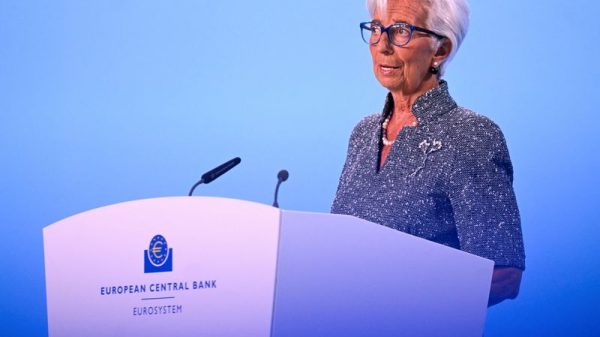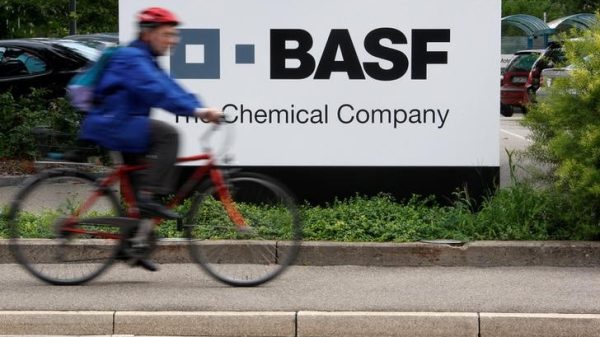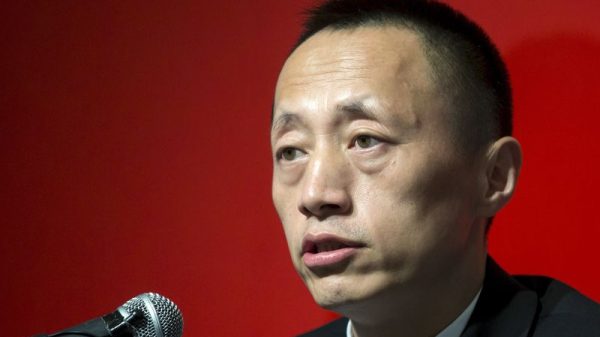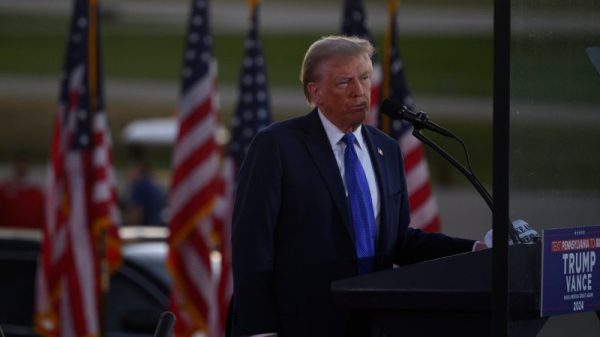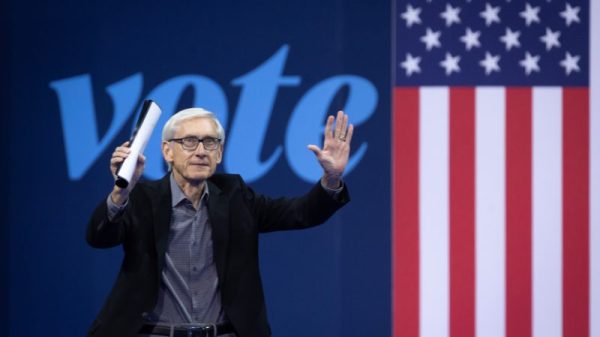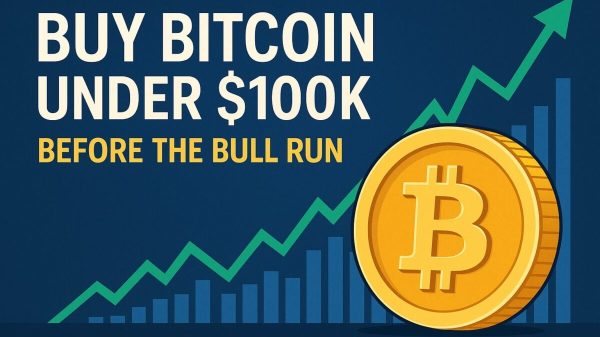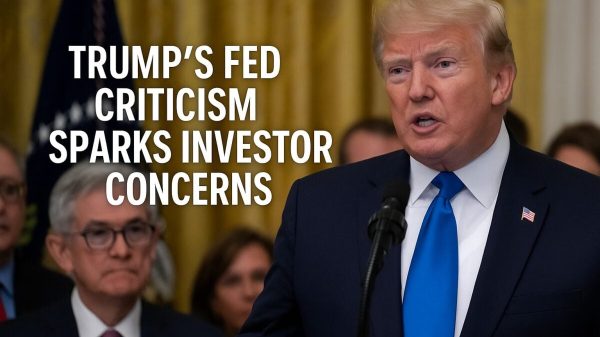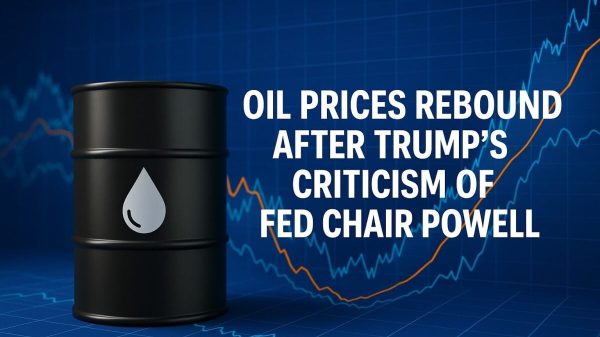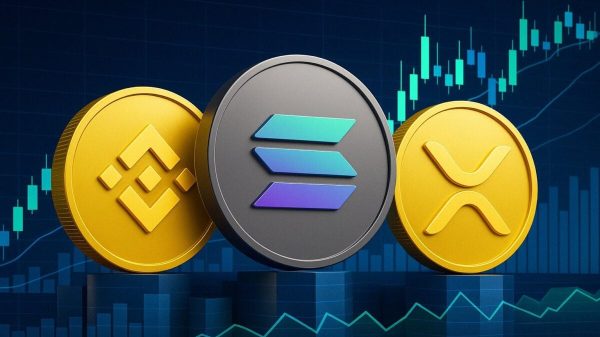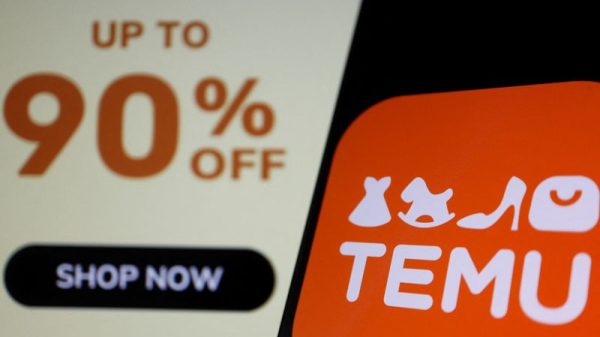Sunoco LP (NYSE: SUN) has announced a record third-quarter adjusted EBITDA of $470 million, signaling a robust performance despite one-time expenses. The energy partnership, known for its fuel distribution and terminal operations, maintained its quarterly distribution and reported a strong coverage ratio.
With a confident outlook for the remainder of 2024 and into 2025, Sunoco’s executives highlighted the company’s strategic growth initiatives and favorable market conditions during the earnings call on October 28, 2024.
Key Takeaways
Sunoco reported a record third-quarter adjusted EBITDA of $470 million, excluding $14 million in one-time expenses.
The company declared a stable quarterly distribution of $0.8756 per unit.
Sunoco maintained a coverage ratio of 2.3x for the quarter, indicating healthy cash flows.
The partnership invested a total of $93 million in growth and maintenance capital.
Executives expressed confidence in meeting the 2024 EBITDA guidance and anticipate a strong
performance into 2025.
Company Outlook
Sunoco remains confident in its 2024 EBITDA guidance and anticipates continued strong performance across all segments.
The company plans to provide its 2025 guidance in December, with expectations for further distribution increases.
Bearish Highlights
Uncertainty lingers due to FERC announcements following a favorable D.C. Court of Appeals ruling for the Liquid Energy Pipeline Association.
Bullish Highlights
Sunoco’s Fuel Distribution segment achieved an 8% year-over-year increase in adjusted EBITDA, reaching $253 million.
The integration of NuStar assets has been beneficial, with the Pipeline System and Terminal segments reporting strong EBITDA figures.
The company is exploring organic growth and acquisitions in fuel distribution and midstream sectors.
Misses
No specific misses were discussed in the earnings call summary.
Q&A Highlights
Executives discussed the company’s resilience and ability to adapt to changing market conditions.
The reduction of leverage to 4x post-NuStar acquisition was highlighted as a significant achievement.
Potential impacts from refinery closures in California were addressed, with Sunoco’s assets deemed well-positioned to meet energy demands.
Sunoco LP’s third-quarter earnings call underscored the company’s strong financial health and strategic positioning. With a record adjusted EBITDA and a stable distribution payout, the partnership has demonstrated its ability to navigate market challenges while capitalizing on growth opportunities.
The company’s leadership team conveyed a bullish stance on future performance, backed by strategic investments and a resilient asset base. As Sunoco prepares to unveil its 2025 guidance, investors and market watchers await further details on the partnership’s trajectory in the dynamic energy sector.
InvestingPro Insights
Sunoco LP’s strong financial performance, as highlighted in the earnings call, is further supported by key metrics from InvestingPro. The company’s market capitalization stands at $7.38 billion, reflecting its significant presence in the energy sector. Sunoco’s P/E ratio of 6.46 suggests that the stock may be undervalued relative to its earnings, which aligns with the company’s robust performance and positive outlook discussed in the earnings call.
InvestingPro data shows that Sunoco’s revenue for the last twelve months as of Q2 2024 reached $23.63 billion, with a quarterly revenue growth of 7.47% in Q2 2024. This growth trend supports the company’s reported record adjusted EBITDA and reinforces management’s confidence in meeting their 2024 EBITDA guidance.
Investors may find Sunoco’s dividend yield of 6.58% particularly attractive, especially considering the company’s stable quarterly distribution mentioned in the earnings call. This high yield is complemented by a dividend growth rate of 3.99% over the last twelve months, indicating Sunoco’s commitment to returning value to shareholders.
An InvestingPro Tip highlights that Sunoco’s earnings per share are forecast to grow this year, which aligns with the company’s positive outlook for the remainder of 2024 and into 2025. Another InvestingPro Tip notes that analysts have recently revised their earnings estimates upwards, further supporting the bullish sentiment expressed by Sunoco’s executives during the earnings call.
For investors seeking a more comprehensive analysis, InvestingPro offers 15 additional tips for Sunoco LP, providing deeper insights into the company’s financial health and market position.
Full transcript – Sunoco (SUN) Q3 2024:
Operator: Greetings and welcome to the Sunoco LP’s Third Quarter 2024 Earnings Call. At this time, all participants are in a listen-only mode. A brief question-and-answer session will follow the formal presentation. [Operator Instructions]. As a reminder, this conference is being recorded. It is now my pleasure to introduce your host, Scott Grischow, Senior Vice President, Finance and Treasurer. Thank you. You may begin.
Scott Grischow: Thank you and good morning, everyone. On the call with me this morning are Joe Kim, Sunoco LP’s President and Chief Executive Officer; Karl Fails, Chief Operations Officer; Austin Harkness, Chief Commercial Officer; Brian Hand, Chief Sales Officer; and Dylan Bramhall, Chief Financial Officer. Today’s call will contain forward-looking statements that include expectations and assumptions regarding the partnership’s future operations and financial performance. Actual results could differ materially, and the partnership undertakes no obligation to update these statements based on subsequent events. Please refer to our earnings release as well as our filings with the SEC for a list of these factors. During today’s call, we will also discuss certain non-GAAP financial measures, including adjusted EBITDA and distributable cash flow as adjusted. Please refer to the Sunoco LP website for reconciliation of each financial measure. The third quarter brought a continuation of Sunoco’s strong financial and operational performance throughout 2024. The partnership delivered record third quarter adjusted EBITDA of $470 million, excluding approximately $14 million of one-time transaction expenses. In the third quarter, we spent $67 million on growth capital and $26 million on maintenance capital. In addition, on August 30, we closed on the previously announced acquisition of a liquid fuels terminal in Portland, Maine. Third quarter distributable cash flows adjusted was $349 million, yielding a current quarter coverage ratio of 2.3x and a trailing 12-month ratio of 1.9x. On October 28, we declared an $0.8756 per unit distribution, consistent with last quarter. Our liquidity position and balance sheet remained strong. At the end of the third quarter, we had approximately $1.4 billion of liquidity remaining on our revolving credit facility. Leverage at the end of the quarter was 4x, in line with our long-term leverage target. I would like to conclude by stating that we are confident in our ability to meet our 2024 EBITDA guidance range. Our financial position remains strong, enabling us to pursue growth opportunities, while maintaining a healthy balance sheet and targeting a secure and growing distribution for our unit holders. With that, I will now turn it over to Karl to walk through some additional thoughts on our third quarter performance.
Karl Fails: Thanks, Scott. Good morning, everyone. Our results this quarter highlight the strength of our business and the benefits that come from the new additions to our portfolio. Let me now walk through our segment results and provide some additional perspective on each segment. Starting with our Fuel Distribution segment, we had a very strong quarter. Adjusted EBITDA for the segment was $253 million, up 3% from the second quarter, and up 8% over the third quarter of last year. We distributed 2.1 billion gallons, down 2% versus the second quarter, and up 1% versus the third quarter of last year. Reported margin for the quarter was $0.128 per gallon, compared to $0.118 per gallon in the second quarter, and $0.125 per gallon for the third quarter of 2023. Looking back over our recent history, our record shows that we take advantage of market upsides. And when there are market headwinds, we are very good at mitigating the downsides. If you zoom out from quarterly results, the basis of our fuel profit optimization strategies is to evaluate our fuel distribution business on total fuel profit dollars rather than volumes and margins separately. We have a demonstrated record of increasing our volumes by growing our market share. Higher breakevens across the industry have led to higher average margins. These factors have led to consistent growth in fuel profit dollars year after year, and we expect that to continue going forward. In our Pipeline System segment, adjusted EBITDA for the third quarter was $147 million, excluding $11 million of transaction expenses, compared to $111 million for the second quarter. On the volume side, we reported nearly 1.2 million barrels per day of throughput. These numbers are not directly comparable to the second quarter for two reasons. First, the NuStar acquisition only contributed 2 months of volume in the second quarter. And second, beginning in the third quarter, volumes from our Permian assets are not included since they are now part of our JV with energy transfer. During the third quarter, our volumes and revenue were impacted by extended maintenance activity at two refineries connected to our pipelines in our Southwest and MidCon [ph] regions. Excluding those impacts, overall performance of the segment was solid, and we expect a stronger fourth quarter with those turnarounds behind us, as well as higher seasonal demand in our MidCon region. Let me take a minute and share some additional thoughts on the Permian JV with Energy Transfer (NYSE:ET). The joint venture is making good progress in integrating the combined systems and has begun executing on synergies and growth opportunities that will drive additional value. We remain very excited about the deal, as it will drive additional growth and perform better in any market condition than what our Permian system would have been able to do on a standalone basis. Moving on to our Terminal segment. Adjusted EBITDA for the third quarter was $70 million, excluding $3 million of transaction expenses compared to $43 million in the second quarter. We reported nearly 700,000 barrels per day of throughput, up from the second quarter, primarily due to a full quarter of contribution from legacy NuStar assets. Our combined portfolio performed well with throughput and storage revenues in line with expectations. I’m pleased to share that we are done with the NuStar integration. All major integration efforts have been completed and we have already delivered the majority of the cost synergies into our run rate business. We are well on our way in executing the commercial synergy plans that have been identified. We remain confident that we will deliver on our commitments of $125 million of synergies in 2025 and $200 million in 2026. These are on top of the $60 million in annual financial synergies that we have already realized. Even with a larger portfolio of business, our focus remains the same. Strong operational execution, expense discipline, commercial creativity, and profit optimization, and ensuring we deliver strong returns on capital that we deploy. I will now turn it over to Joe to share his final thoughts. Joe?
Joe Kim: Thanks, Karl. Good morning, everyone. We delivered a very strong third quarter. Our business continues to deliver quality results quarter-after-quarter. Although 2024 is not quite over, we expect to have another record year and deliver on full year EBITDA guidance. Let me put some perspective on this achievement. All three of our business segments are performing well. Our Fuel Distribution segment continues to grow and deliver outstanding results. We have grown volume and fuel profit dollars even with the divestment of our West Texas business earlier this year and a U.S macro environment that has seen a decrease in year-over-year demand. Our scale, our expense management and our ability to optimize fuel profit have positioned us to deliver strong results year-after-year. As for the Pipeline Systems and Terminal segments, our continued growth in critical midstream infrastructure has provided us with material diversification and further income stability. The strength of both segments is reflected in our 2024 results. And finally, our acquisitions along with our growth capital are delivering value creating results. The NuStar acquisition was obviously the biggest. We set very high expectations both internally and externally. We’re very confident that we will, at a minimum, meet these high expectations. Last quarter, we detailed the synergy guidance. We’re well-positioned to deliver on these synergy targets this year, next year, and beyond. Our entry into Europe has gone very well. We like the stability of the income streams that each location provides. We’re confident that these assets will remain highly valuable for decades to come. Bottom line, 2024 will be another very strong year for Sun. As for next year, we expect more of the same. This December, we’ll provide a new investor presentation, which will include our formal 2025 guidance and business outlook. I’d like to preview a few key themes. The outlook for all three of our business segments remains very strong. We expect industry fundamentals to remain highly supportive, and we expect to deliver on the NuStar acquisition synergies. When you put it all together, we expect to deliver another record year. We will continue to be a growth company. We have a proven record of delivering on growth opportunities. We have had more than seven consecutive years of growth in DCF per LP unit, and we expect this to continue. And finally, we’re positioned to once again increase our distribution early next year and for years to come, all this while maintaining strong coverage and leverage ratios. Operator, that concludes our prepared remarks. You may open the line for questions.
Operator: Thank you. [Operator Instructions] The first question is from Theresa Chen from Barclays (LON:BARC). Please go ahead.
Theresa Chen: Good morning. Great to see the strong results in general and the strong fuel margin especially. I understand you had previously amended the long-term range following the re-segmentation. Just with this result though and more empirical data from the combined assets and the strength demonstrated, can you provide some additional color on your views on fuel margins going forward?
Austin Harkness: Yes, Theresa, this is Austin. I’ll just start by saying, echoing some of Joe’s prepared remarks. I mean, our Fuel Distribution business has never been healthier and I think the third quarter emblematic of that. As you know, we don’t manage for CPG margin or volume specifically on a quarter-to-quarter basis, but really seek to optimize fuel profit over the long run. In terms of what delivered the quarter in our margin view going forward, as Karl shared in his remarks, we were — margins were strengthened against the backdrop of elevated breakevens, which paints a pretty constructive margin environment. And there was flat price volatility. If you look at RBOB and ULSD, it was off throughout most of the quarter. Some of that’s continued into Q4. And there were commercial opportunities that presented themselves by the market that the team was able to execute against. So it’s never one thing that delivers the quarter. In terms of our view going forward, I mean, I think a lot of the macro fundamentals in terms of elevated breakevens remain in place, and I think they’re going to remain fairly sticky. So our view is fairly bullish going forward. That said, there’s obviously wildcards with what flat price is doing and what the overall demand and volume picture looks like. But we’re bullish going forward in terms of margin. Now, are we going to print record margin, record adjusted EBITDA quarter-after-quarter, that might be a bit of a stretch. But I think what is reasonable to expect, and I think what our track record would suggest, is that we’re going to continue to grow fuel profit on a going forward basis on a trailing 12-month period.
Theresa Chen: Thank you for that nuanced answer. Turning to the broader landscape, I would be remiss not to bring up the election. Following the results, what are your views on how the apparent Trump victory impacts your business or changes the landscape of the industry in general?
Joe Kim: Hey, Theresa, it’s Joe. I think the first thing is, I think the market appreciates some clarity and boy, did we get some clarity last night. So I think overall, you kind of saw how the market opened, how the street has responded, investors have responded to that. Secondly, for Sun, I think it’s without question this is positive for Sun and for the industry as a whole. So I think all things considered, it was a very positive event for Sun and the sector going forward. I would add one other perspective from a Sun side is that if you look at it over a longer landscape and longer time period, we’ve performed well within various administrations and you sprinkle in COVID and other macro factors and I think there’s a good reason why. Our business is resilient because we perform critical functions and we own critical infrastructure that keeps America healthy and moving forward. And I think we’ve also demonstrated our ability to evolve, execute and grow on a going forward basis. So all things considered, we’re in a better position today, and we feel very, very strong about our future going forward.
Theresa Chen: Thank you.
Operator: The next question is from Jeremy Tonet from JPMorgan Chase (NYSE:JPM) & Company. Please go ahead.
Noah Katz: Hey, this is Noah Katz on for Jeremy. Thanks for the question. First, I wanted to touch on your capital allocation priorities with Sun continuing to decrease leverage this quarter to 4x. What are your thoughts on weighing repurchases versus dividend raises or continuing to lower leverage? I think you said you’re planning on raising the dividend early next year, earlier on this call. Thanks.
Scott Grischow: Yes, this is Scott, Noah. Look, I’d say, our primary focus right after the NuStar acquisition was to get our leverage back to our long-term target at 4x, and we were able to accomplish that within 6 months following close. Recall that we had given ourselves the 12 to 18-month timeframe to do that. And I really think that’s a result of some of the things we talked about today, the strong performance of the base business, our ability to harvest synergies quicker and at a greater extent that we had originally talked about with the NuStar acquisition. And so protecting the balance sheet remains a core component of the capital allocation strategy. That said, now that we have achieved our long-term target, we can begin to refocus on the other two elements of our capital allocation strategy, which is returning capital to our unit holders. As Joe said, we expect to have announcements there early next year regarding future distribution increases and see this really as a multi-period, multiyear outlook for distribution increases going forward. And then in conjunction with that, the other component of our capital allocation strategy is continuing to remain a growth company. And as Karl and Joe both said, I think we have a couple areas to focus in that regard as well. Our organic growth capital program, as well as continuing to look at acquisitions both in the fuel distribution and midstream space. As it relates to unit repurchases, that is at its heart a capital allocation decision as well. And from our standpoint, we see the best return to our unit holders coming in the form of returning capital to them through distribution increases and continuing to reinvest in the business in accretive growth projects.
Noah Katz: Thanks for that. That’s helpful. And then as a quick follow-up, I think you guys spoke about a little bit earlier about the fuel distribution trends you’re seeing going forward and your thoughts on it. But I’m curious about your initial thoughts into 2025, given the trends you’re seeing thus far into the fourth quarter. So any color here would be helpful. Thank you.
Austin Harkness: Yes, this is Austin. I touched on our margin view with Theresa’s question, but just to kind of switch over to the volume side of the equation, I think our view over the next 6 to 12 months is that demand for refined products is going to roughly mirror the last 6 to 12 months, which if you’re tracking EIA, what that means is on the gasoline side, roughly flat on a year-over-year basis. There’s been some slight strengthening over the last couple of months, with ULSD being a touch softer than that. In terms of our view and what that means for Sun, I mean, we’re well prepared to execute and deliver in that environment, but if our assumptions are off and demand comes in below expectation, I think using history as a guide, that would create a pretty constructive margin environment, and I think our track record suggests that we’re well-positioned to execute and take advantage of the opportunities that would present themselves, should that be the case. And then on the flip side, if demand exceeds our expectations, we have an asset base and portfolio of income streams and a team that’s wired to take advantage of those opportunities as well. So we’re pretty bullish about the fuel distribution business, both obviously with the Q3 print and what the near-term and long-term look like for the business.
Noah Katz: Thank you.
Operator: The next question is from Gabe Moreen from Mizuho (NYSE:MFG). Please go ahead.
Gabriel Moreen: Hey, good morning, everyone. Just first I want to start out with a two-parter on some of the legacy NuStar assets. With some refinery closure announcements announced in California, just wondering how you feel that may impact the legacy NuStar assets in California. Then also competitors come out and announce a big expansion to the Denver markets, which I also believe connects to one of the legacy NuStar refined products assets. So just wondering if that additional competition could have any impact.
Karl Fails: Yes, Gabe, this is Karl. I’ll start with California. Clearly, there’s been a talk among energy companies doing business there on the challenges of the regulatory environment and some of the additional requirements that are being put in place. With our asset base, we think if anything there’s upside, not downside to that, if there are refiners that find it too challenging environment economically to do business there, the energy demand in that state is going to continue to grow, and whether it’s traditional hydrocarbons or whether it’s a lower carbon version or renewable diesel, our assets are really well-positioned to be able to provide that storage and critical infrastructure to enable that to happen. So anyway, we’re really pleased with our assets in California, kind of regardless of what the future looks like. You talked about other competition in some of our other areas, and here is what I would say is our asset base is really good and we think generally its setup to really match where refiners are producing and deliver it to markets where there is consumer demand. A lot of our refined product infrastructure on the pipeline side, right, really are kind of internal, center of the country kind of projects or assets. And we don’t see that demand profile really changing over the near-term or even beyond that. And I think I’ll go back to one of the things Joe said earlier. Even if there are changes, we have a really creative commercial team and we’re going to find some way to utilize those assets and deliver more value to the customers. So I think both those — in both those cases, they’re either neutral to positive on our outlook.
Gabriel Moreen: Thanks, Karl. And maybe if I can follow-up, again, another Legacy NuStar question. Their Corpus Christi assets, which I don’t believe are in the JV with Energy Transfer. I think the big contract with [indiscernible] is coming up soon, so I’m just wondering to what extent your expectations may or may not be shifting around renewing that.
Karl Fails: Yes, so you’re correct. Our South Texas crude assets are not in the joint venture with Energy Transfer. I think we take maybe a little different approach on these kind of questions than maybe NuStar did in that we traditionally don’t talk publicly about individual contracts with customers. And so I’d expect that going forward more out of our — we think, if anything, it gives us more opportunity commercially to keep those discussions private with our counterparties. With that being said, there are opportunities. Some of the synergies that we’ve identified in NuStar is we think there — we could better utilize some of those assets. Clearly, there’s always re-contracting risk, and you might change from one customer to another customer. But our Corpus Christi terminal is a really good terminal, and our business development teams are working on that, and we expect that to continue to be a good terminal for us going forward.
Joe Kim: Hey Gabe, this is Joe. Let me add one thing on top of everything Karl said. In my prepared remarks I mentioned that in December we’re going to give guidance about 2025 and our outlet going forward. You brought up three good points about the refinery closure in California, the expansion into Colorado and South Texas. There’s always going to be commercial situations going positive, negative, but I think whenever we provide the full details in December, I think what the market is going to take very clearly from us is that we’re very bullish on all three of our segments, from Fuel Distribution to the Pipeline system to our Terminal system out there. So when you put it all together, we’re going to have a great year in 2024, and 2025 we’re going to get very strong guidance because we’re very confident about our business in all three segments.
Gabriel Moreen: Great. Thank you, Joe. Thank you, Carl.
Karl Fails: Thank you.
Operator: [Operator Instructions] The next question is from Ned Baramov of Wells Fargo (NYSE:WFC). Please go ahead.
Ned Baramov: Hey, good morning. Thanks for taking the questions. Earlier this summer, the D.C. Court of Appeals ruled in favor of the Liquid Energy Pipeline Association, and the ruling allows FERC-indexed liquids pipelines to possibly retroactively recoup earnings on previous years’ tariffs, which are now considered to have been too low. So can you maybe just walk through the potential implications to Sunoco from this ruling?
Karl Fails: Sure, Ned. I won’t give a lot of detail because this is still an ongoing issue, but I can give you our perspective on it. And so first, we clearly support the D.C circuit decision on the rate index issue. Unfortunately, there’s been some FERC announcements and notices after that that’s created a little bit of uncertainty and confusion in the market. So there’s a little bit of wait and see how this shakes out, but we’re obviously involved in through industry associations or other means and we’re optimistic that this can be resolved in a favorable manner. As far as the impact to Sun, I’d say kind of regardless of the outcome, whether it’s in our favor and our EBITDA is a little higher or it goes against us, I’ll reiterate what Joe just said, our asset base is strong, our ’24 is strong, our ’25 is going to be stronger. And as we continue to deploy capital in a profitable manner, we’ll continue to grow beyond that.
Ned Baramov: Thanks for this, Karl. And then I appreciate the high-level preview of what to expect in December. Can you maybe give us a little bit more specifically, will there be new metrics as part of your guidance such as maybe segment EBITDA or maybe a longer term EBITDA target for the business?
Joe Kim: Hey, Ned, this is Joe. Here’s what we have right now. We’re a month away, so I would ask the street to be just moderately patient since we’re talking days instead of months from providing full details on it. And I think on my prepared remarks, I talked about the themes. It’s going to be a really strong year. As far as exactly what elements we’re going to provide in guidance, we have it all. We just have to figure out what’s the best way to give clarity to the market on the going forward basis without flooding the market with too much information where it becomes even more confusing. So we’ll have a very thoughtful, clear viewpoint about 2025, and it’s only days away versus months away. And I think you’ll be, I think you and the market will be happy to see our bullishness about our business going forward.
Ned Baramov: That’s fair. I look forward to December. Thank you.
Joe Kim: Thank you.
Operator: This concludes the question-and-answer session. I would like to turn the floor back over to Scott Grischow for closing comments.
Scott Grischow: Thanks for joining us on the call this morning. As always, feel free to reach out with any questions, and we look forward to catching up with everyone soon. Have a great day.
Operator: This concludes today’s teleconference. You may disconnect your lines at this time. Thank you for your participation.
This article was generated with the support of AI and reviewed by an editor. For more information see our T&C.

